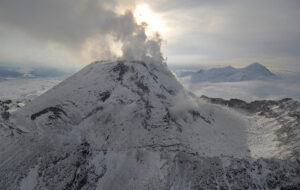Close observers of the moon in the 12th and 13th centuries occasionally noticed something downright disconcerting. During lunar eclipses, the moon would seem to vanish entirely from the sky.
These medieval astronomers couldn’t know it, but they were observing the effects of titanic volcanic eruptions ejecting tremendous amounts of ash into the atmosphere.
During annual eclipses, a ring of light — called an annulus — is normally visible around the edges of the moon. But in the weeks and months after huge volcanic eruptions, the particulates in the sky are thick enough to obscure the annulus. This created darker-than-normal heavenly events across Europe, East Asia, and the Middle East.

Observers across Europe, East Asia, and the Middle East noted darker-than-usual eclipses. Photo: Shutterstock
Now a team of scientists, led by Sebastien Guillet of the Institute for Environmental Sciences at the University of Geneva, has pored through the records these historical stargazers have left behind. The goal? To better pinpoint the year (or, in some cases, the month) of significant volcanic eruptions to better understand how these geological events affected the climate and culture of the planet a thousand years ago. The team published its results in the journal Nature earlier this month.
The work “was a fascinating task, [but] it was also very time-consuming. We had to go through hundreds of texts written in languages that are not widely used anymore,” Guillet told Space.com.
Climate scientists routinely use ice core and tree ring data to estimate the rough dates of volcanic eruptions. But it’s an imprecise science because volcanic eruptions interrupt typical weather patterns in unusual ways — meaning the tree ring and ice core data can sometimes be a little nebulous, CNN reported. Linking this data with historical records provides a much more exact window into past volcanic eruptions.

Large amounts of volcanic ash in the atmosphere not only obscure the moon, but also cool temperatures. Photo: Shutterstock
The calamitous 12th and 13th centuries saw not only a plague that wiped out a third of the population of Europe but also the so-called Little Ice Age. Many historians believe the period of cooling had powerful impacts on societies across the northern hemisphere.
One thing that leads to cooling? Lots of ash in the atmosphere. The authors of the paper, “hope that our new dataset will help to inform the extent of [the role of volcanic eruptions] in the onset of the Little Ice Age.”





